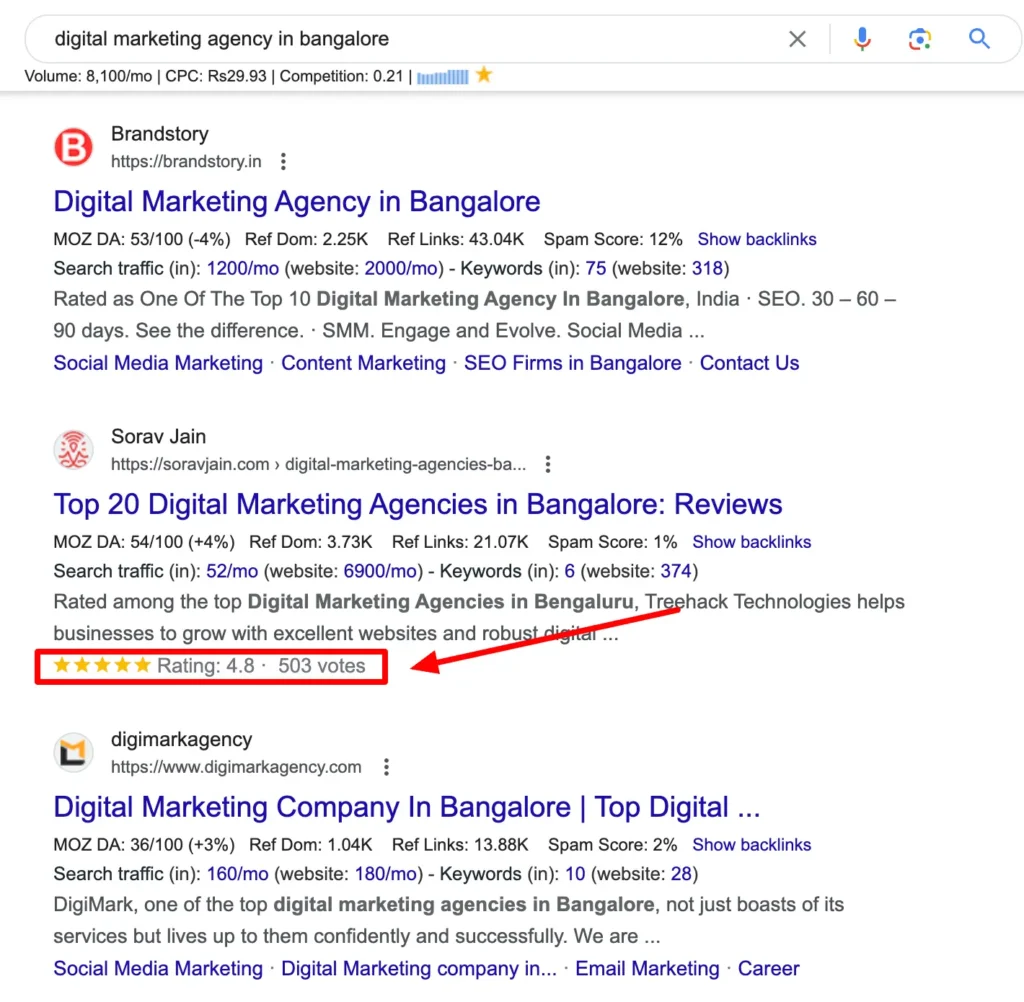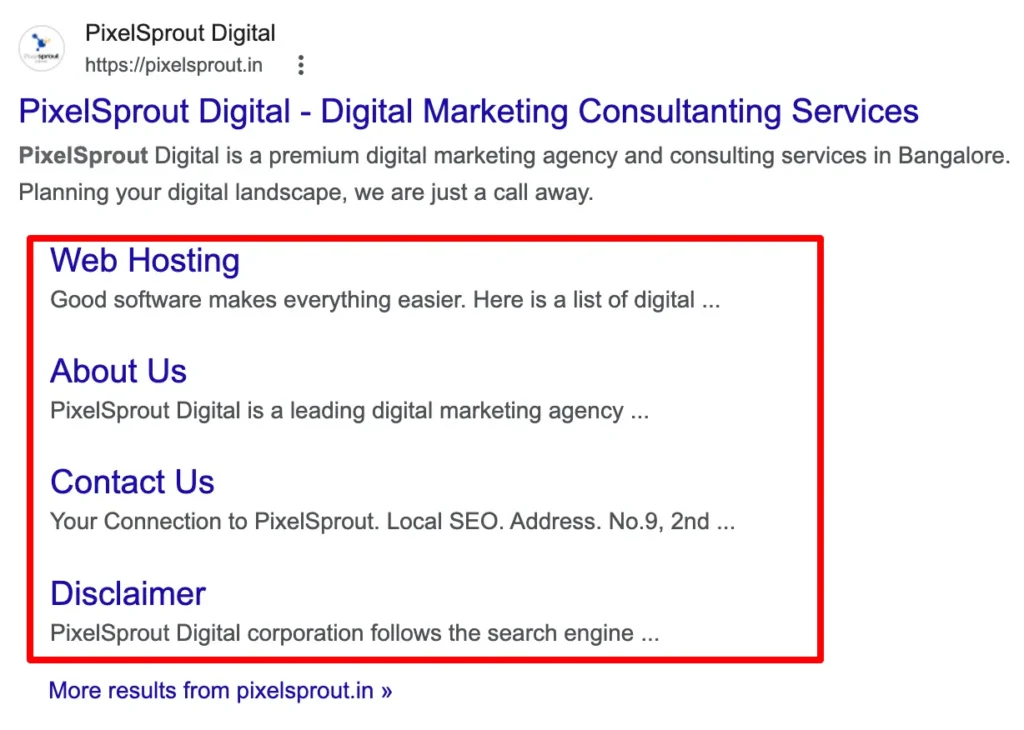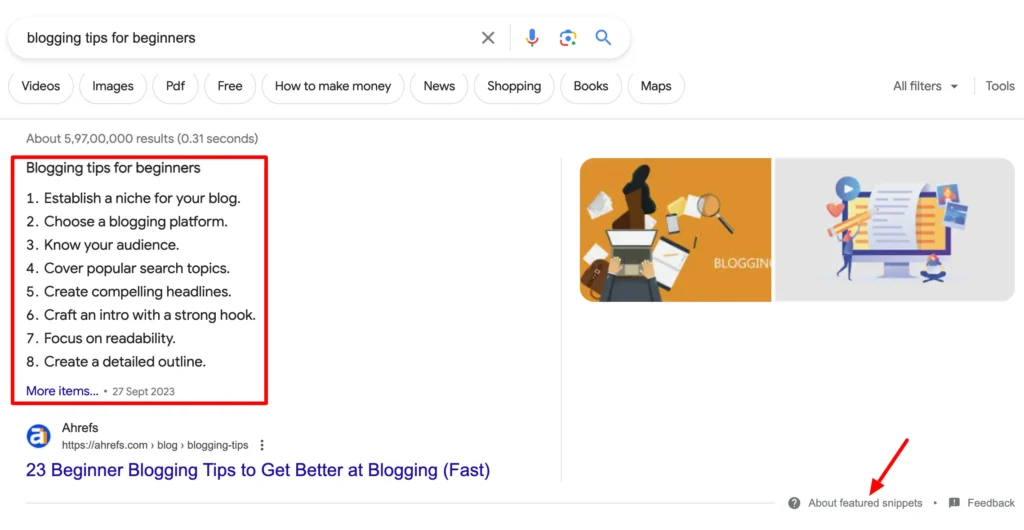What Is Organic CTR and Why It Matters for SEO
Organic CTR (click-through rate) measures what percentage of searchers click through to your site from the organic search results. It indicates how appealing your listings are to searchers.
Optimizing CTR is crucial because:
- Higher CTR = More traffic. By making your listings more enticing, you get more visits without added SEO work.
- CTR signals relevance to Google. High CTR tells Google your content matches the search intent well.
This guide will teach you how to boost organic CTR with easy-to-implement tips.
How to Calculate Your Organic CTR
Organic CTR is calculated as:
Organic CTR = (Clicks from SERPs / Impressions in SERPs) x 100For example, if you got 50 clicks from 1,000 impressions, your CTR is 5%.
To find your current organic CTR:
- Go to Google Search Console
- Navigate to Performance > Search Results
- Enable Impressions and CTR columns
- Filter by queries or pages to analyze specific CTR
Now let’s jump into tips to improve that percentage.
10 Actionable Ways to Increase Organic CTR
1. Craft Appealing SEO Page Titles
Your page title is the first element searchers see. An interesting title decorated with power words can boost CTR.
📝 Title Optimization Tips
- Include your target keyword near the start
- Use brackets around numbers for visual intrigue
- Add power words like “unbelievable”, “incredible”
- Put the publication year to indicate freshness
- Add emotional words like “struggling” or “make money” based on intent
- Format as a numbered list if that fits the results
Before:
Blender ReviewsAfter:
[Top 5] Incredible Blenders For Making Smoothies (2024 Review)🚀 This grabs attention with formatting, power words, numerals, date, and keywords tailored for the searcher intent.
2. Write Strong Meta Descriptions with Power Words
Your 160-character snippet is valuable real estate to convince searchers. Use power words to create urgency and highlight value.
❌ Weak meta description
Learn tips for writing good meta descriptions for SEO and why they matter. Our guide covers meta description best practices with examples you can use.✅ Strong meta description
Struggling with SEO? Learn the urgently essential meta description secrets in our definitive 2024 guide to captivate searchers.3. Shorten URLs with Target Keywords
Include your main keyword in a clean, short URL close to the start.
Bad URL:
www.pixelsproutacademy.com/seo-advice/understanding-meta-descriptions/what-makes-a-good-meta-description-in-detail/Improved URL:
www.pixelsproutacademy.com/good-meta-description-for-seo/4. Add Code to Get Featured Snippets
Featured snippets summarize your best answer to the search query at the top of results. Auditing your pages for snippets and adding needed code can increase CTR.
Add a concise, direct answer paragraph close to the top like:
A good meta description for SEO should be under 160 characters long, use power words, speak to searcher intent, and include your target keywords. Well-crafted snippets that highlight value can boost click-through rates.5. Implement Rich Snippets with Schema Markup
Rich snippets showcase extra information from review ratings to images in your listing, improving CTR.

Adding JSON-LD or microdata markup enables these enhanced results. See the snippet types Google supports here.
6. Optimize Architecture for Sitelinks
Sitelinks under your meta description link to related subpages. This expands your presence.

While you can’t manually dictate sitelinks, a strong internal linking strategy with a sensible site architecture can help you earn them.
7. Pick a Recognizable Site Favicon
A professional, properly-formatted favicon reinforces your brand.
📝 Tips for an ideal favicon:
- 48 x 48 px minimum size
- PNG for crisp quality
- Square proportions
- Matches your logo or brand
- Stands out at small size
8. Add a Table of Contents to Boost CTR
A link-based table of contents (or “link TOC”) shows inline under your meta:

To add one:
- Create content sections with
idanchors like<h2 id="SECTION">Title</h2> - Link to each one above the meta so
Top Tipslinks to#TIPSon your page
This gives readers a menu to instantly jump into your content.
9. Improve Your Page Experience
A fast, usable, ad-light page encourages visitors to stay and signals quality to Google.
🔧 Technical optimizations:
- Speed up page load times
- Enable HTTPS
- Eliminate intrusive popups
- Limit ads above the fold
📝 Content formatting:
- Chunk content into scannable sections
- Use bullet points and numbers lists
- Break up text with images
- Format key points in bold or italics
10. Build Brand Awareness with Retargeting Ads
When searchers know and like your brand, they will click your listing regardless of position.
You can rapidly boost brand familiarity with:
- Facebook / Instagram ads
- Google Search retargeting campaigns
- Retargeting people who already visited your site
This trains people to recognize and trust your brand when they see you in the SERPs.
Summary: Essential Tips to Improve Organic CTR
Optimizing your organic search presence is an easy way to get more traffic. You can implement quick technical SEO wins like:
- Crafting intriguing titles and descriptions using emotional keywords, power words, bullets, and brackets
- Shortening URLs to include target terms
- Enhancing listings with rich results and sitelinks
- Monitoring and improving page experience factors Pair this with an enduring brand awareness strategy through retargeting ads.
Focus on low-converting pages first for the biggest easy wins. Then make incremental optimizations across all listings so searchers consistently click your most relevant, high quality content.
Advanced Tactics to Further Boost Your CTR
So far we’ve covered the most effective basics you can implement right away to make your listings more enticing. Now let’s dig into some more advanced tactics to take your CTR to the next level.
Leverage Featured Snippets in Multiple Positions
While the top featured snippet spot has the most impressions, you can also rank featured snippets on the right side of the search results.
Optimizing your content for right-side snippets can increase click-through rates even if you already have the top spot.

To optimize, identify missing related questions that visitors ask and provide focused answers.
Create Compelling Link Inserts
Link inserts include your site name and a descriptive phrase in the search listing like:

Though link inserts don’t directly raise CTR, they build brand awareness. Site links reinforce what your brand is about.
To potentially earn inserts, create content silos with closely related themes. For example, targeting homesteading topics across different posts strengthens your domain authority around homesteading for possible inserts.
Experiment with URL Variations
You can create different URL variations that target the same page to appeal to different searcher intents.
For example, your core content might best target the term “improve website conversion rate”. Additional URLs could hit other intents like:
- how-to-increase-ecommerce-conversion-rate
- 10-secrets-to-double-your-conversion-rate
Point them all to your strongest content while monitoring CTR by variation. Iterate on what resonates most.
Create Content Variations with Rel=Canonical
Similarly, you can make minor content tweaks to create new pages targeting different intents, all pointing back to your strongest version.
For example, create versions like:
- “How to increase conversion rate in 2024”
- “Best ways to boost conversion rate fast”
Add a rel=canonical tag to indicate the main URL you want to get credit for in Google.
Then promote the different variations and see if any significantly outperform on CTR to inform future content development.
Final Thoughts
Optimizing CTR should be an integral part of your SEO strategy. Start by identifying low-converting rankings and implementing quick technical improvements.
Monitor your progress in Search Console and double down on what works. With time and iteration, you can dramatically boost your clicks and traffic from Google.
Hi Imran Sir, I really liked the article I am waiting for detailed articles on implementing all this action on my website.